Sustainability communications for a climate-conscious places
London Climate Action Week is Europe’s largest city-wide climate festival, now in its seventh year. Taking place from 21–29 June 2025, it brings together over 45,000 people and hundreds of organisations to focus on the intersection of global climate ambition and local action. Hosted across venues, communities, and institutions throughout London, it’s where environmental policy, innovation, design and public engagement converge.
This annual moment matters because climate action isn’t just a technical challenge, it’s a cultural one. How we communicate that challenge has everything to do with how people respond. From local authorities and design teams to cultural institutions, youth activists, and environmental experts, London Climate Action Week mobilises the full breadth of the city’s climate ecosystem and invites everyone to take part.
Below, we outline five best practices for sustainability communications, drawn from our experience and the brilliant work we've seen across the city this week.
Lead with values, not just data
While carbon targets, retrofit metrics and performance frameworks are essential, numbers alone rarely move people. To build understanding and action, we need to lead with the human and civic values behind the data, safety, belonging, affordability, pride, legacy. Telling people that emissions must fall by 68% is one thing. Showing how that links to warmer homes, safer streets, lower bills, and more resilient communities is another.
Organisations like Southwark Council, working in partnership with platforms like Commonplace, are helping shift that framing, positioning climate action as a community benefit, not just an environmental obligation. The language is warmer, more inclusive, and grounded in real life.
Image courtesy of Southwark Council
Make it local, make it personal
Climate change as a global crisis can feel distant and abstract. Localising the narrative is one of the most effective ways to close that gap. When people see their own street, park or neighbourhood reflected in the conversation, they are more likely to care, and act.
We’ve seen inspiring examples from Urban Symbiotics, who use design research and community insight to create hyperlocal narratives around change, and from Public Practice, whose placements embed climate-minded practitioners into local authorities to co-create place-specific strategies. From signage to storytelling, from murals to mapping exercises, local detail matters.
Image courtesy of Urban Symbiotics
Centre emotion: hope, joy, belonging
Too often, climate communication defaults to fear. While urgency is important, emotional fatigue and climate anxiety are real. What resonates more deeply, and invites action, is storytelling and emotional engagement rooted in hope, joy, connection and belonging.
The Serpentine’s “Back to Earth” programme is one such example, using contemporary art to explore climate themes through affective, human-centred lenses. These are stories not just of risk, but of possibility. Similarly, cultural events and local exhibitions, such as those curated by the Museum of London, show how collective memory and creativity can open new emotional pathways into climate thinking.
Image courtesy of The Serpentine
Design for participation
The best communications aren’t one-directional. They are tools for dialogue. In sustainability communications, this means creating platforms that invite input, interaction and co-creation. This can be through community workshops, participatory exhibitions, or digital prompts.
The Museum of London’s community-led exhibition processes offer a brilliant example of how institutions can open their doors to diverse perspectives, allowing residents to shape not just the content, but the very framing of climate narratives. These projects don't just inform. They build trust, shift perspectives, and cultivate local ownership over change.
Image courtesy of Museum of London
Keep it human, keep it honest
Finally, in an era of greenwashing and over-polished messaging, authenticity is essential. The strongest sustainability communications acknowledge complexity. They share the challenges as well as the wins. They speak plainly, transparently, and with humility.
This doesn’t mean downplaying progress. It means narrating it in a way that feels honest and human. Whether you’re a local council, a developer, a cultural organisation or a design practice, you don’t need to have all the answers. You just need to communicate your intent with clarity, and show your commitment to learning in public.
One example comes from Camden Council’s Citizens’ Assembly on the Climate Crisis, which didn’t present itself as a final solution but rather as a co-developed process, openly sharing insights, limitations, and next steps. By treating residents as equal stakeholders and being transparent about trade-offs, the council built greater trust in the journey toward climate resilience.
Final Thought
Sustainability isn’t just a technical agenda. It’s a cultural one. And as London Climate Action Week reminds us, how we talk about climate matters just as much as what we do.
When communications are values-led, localised, emotionally grounded, participatory, and honest, they become part of the solution. They help connect people to place. They shift climate from a distant policy to a shared civic story.
At Concept Culture, we help clients tell that story, through placemaking, brand identity, narrative strategy and public engagement. If you’re ready to turn your climate ambition into something people can see, feel and believe in, we’d love to collaborate.
Are you looking for advice on how to create an engaging climate story for your place?
If you need help defining your target audience, developing your place narrative, expressing your place story, or ensuring your story reaches your audience, please get in touch. We’d love to offer you tailored branding and marketing support to grow and elevate your place brand through the power of storytelling.
Book a discovery call with us to discuss your branding needs.




